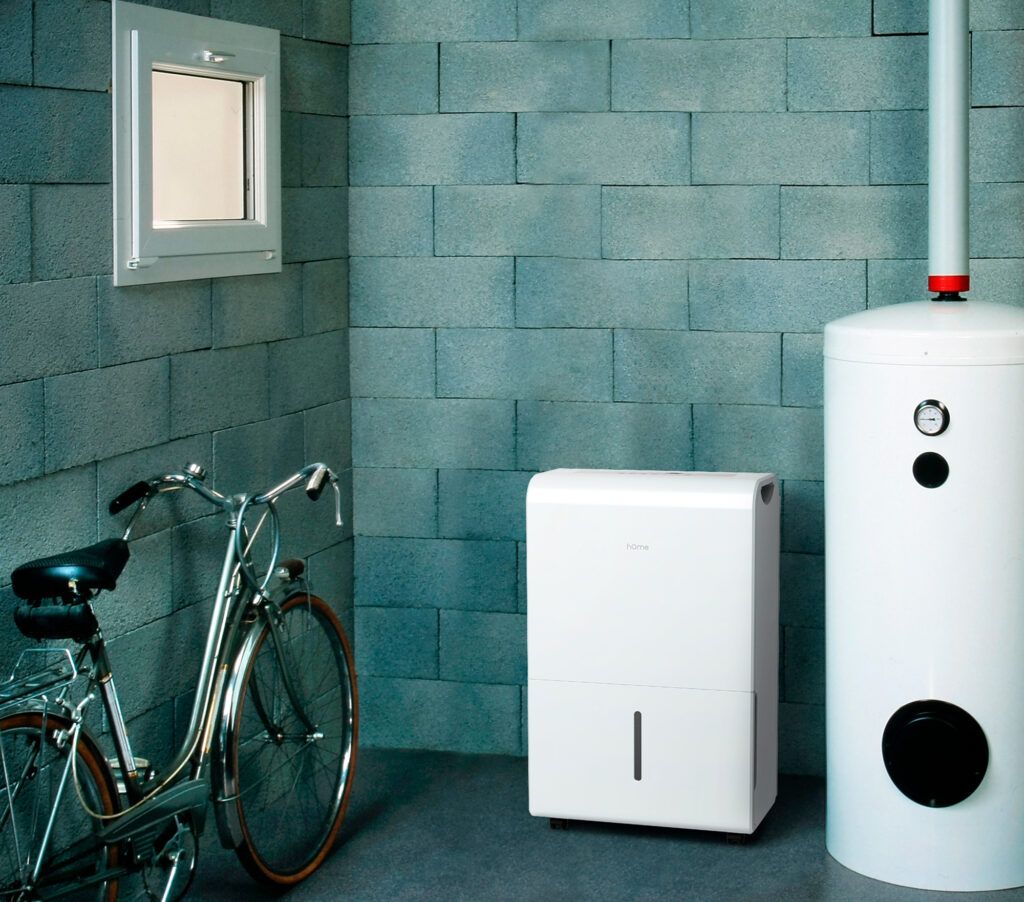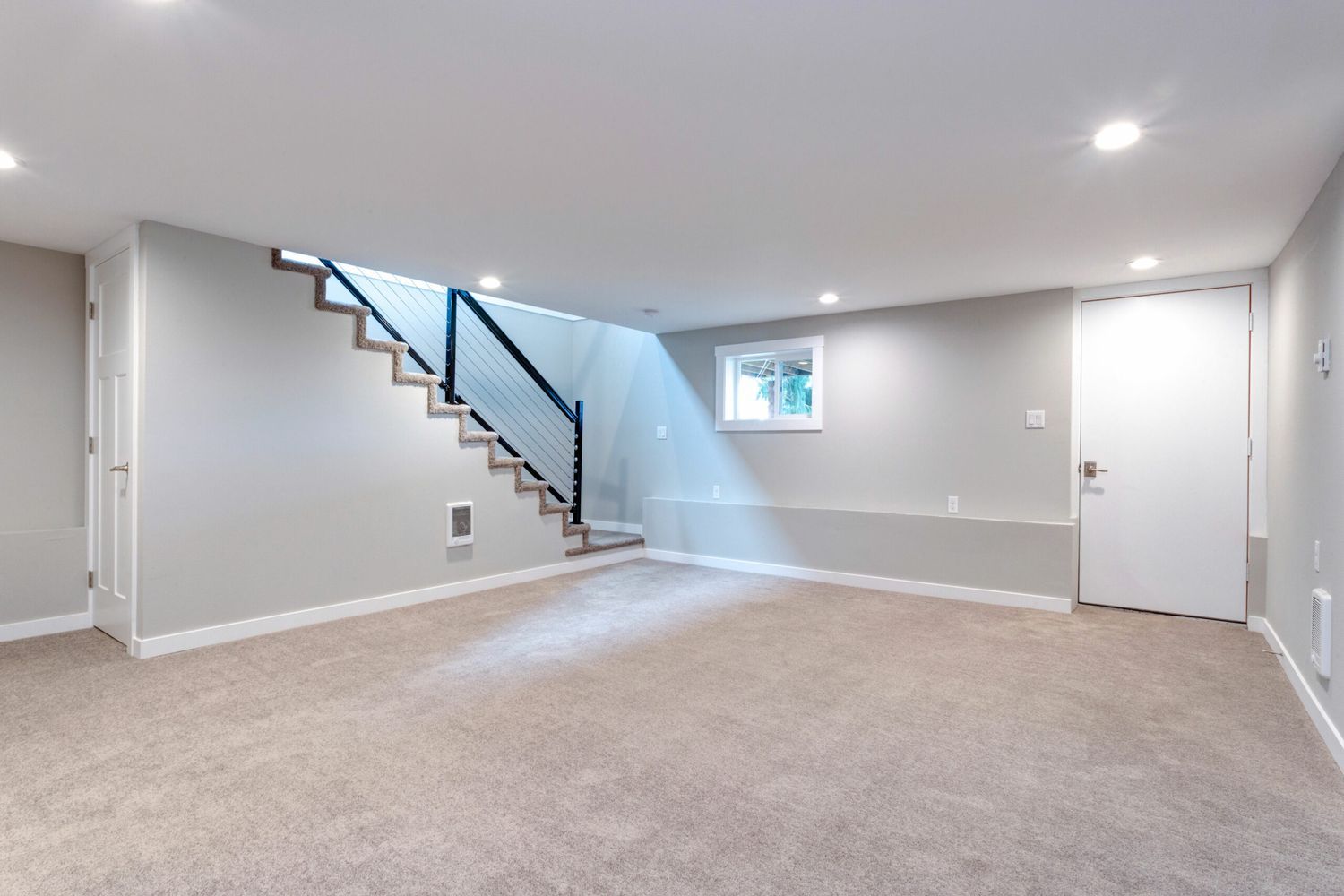Whether it’s finished or unfinished, a basement is a valuable space in your home. But if there’s a pungent, musty smell, a basement can be a very unpleasant place to spend any time.
If left untreated, odors caused by a lack of air circulation and excess moisture can even work their way into the rest of the house. Instead of ignoring the problem, this guide will show you how to get rid of a musty smell in your basement. We’ll also provide steps you can take to keep musty basement odors from coming back.
1. Find the Source

The first step to getting rid of musty smells in your basement is to identify where they’re coming from. Often, a musty smell is simply a symptom of a more pressing issue, usually mold or mildew caused by moisture.
Some of the most common areas where moisture builds up in a basement include:
- Windows—wells can improperly direct water toward the house instead of away from it
- Exterior entrances like doorways or bulkheads
- Windows from the floor above
- Exterior doors from the floor above
- Bathroom and kitchen plumbing from the floor above
It’s also possible that the cause of the issue is groundwater. If the grading around your home pitches back toward your basement, water will eventually work its way in. If you find puddles at the base of basement walls where there are no doors or windows, it’s likely that groundwater is getting in.
If your finished basement smells musty, but you’re sure there are no leaks behind the walls, the odor could be coming from a dry floor drain or P-trap under a sink. Since these drains don’t see frequent use, the fluid in the trap that blocks sewer gasses can dry up. Pouring a few cups of water into these drains from time to time might make the difference and solve the issue when a dry basement smells.
Finally, keep in mind that musty smells could also be due to pet odors on furniture or carpets. If everything is watertight and dry, and your traps are full of water, there’s a good chance that the issue is in the fabric of your carpets or upholstered furniture. You can use a specialized carpet shampoo or upholstery cleaner to try and remove those stains or an ozone generator to neutralize odors in the entire home.
2. Make the Repairs
Even if you can temporarily eliminate the musty smell in your basement, it will return if you don’t resolve the issue. Troublesome windows and doors will leak whenever it rains, and cracked or leaky pipes will continue to cause problems until you replace them. If your cold-water pipes sweat, you can insulate them with pipe wrap.
Severe leaks in the foundation may require excavating outside and applying a waterproofing membrane. Otherwise, you can coat the interior of the foundation with a waterproofing treatment.
If groundwater is the issue, re-grading the property might be the best option. You can also hire a contractor to dig around the foundation and install a French drain to divert water. For extremely wet basements, a trough around the interior leading to the sump pump might be necessary to control groundwater.
Be sure to address any wet materials as well. Mold can be removed from damp drywall, concrete, and wood, but soaked drywall or insulation is easier to remove than repair.
While some leaks may be easy to fix on your own, it’s best to hire a contractor if you can’t find the source of a leak or moisture is getting in through the walls.
3. Control the Humidity

Once you make your repairs, you need to dry your basement and keep it dry. The easiest way to remove excess moisture is to use a dehumidifier. These devices pull moisture out of the air and condense it into a removable tank that you can remove and empty. In some cases, you can route a drain hose to a floor or sink drain, removing the need to empty the tank. Dehumidifiers are excellent for basement settings.
Shoot for a humidity level of roughly 50 percent so the space stays comfortable without encouraging mold growth, which occurs at over 60 percent humidity.
4. Tackle the Smell
With the moisture under control, you can finally tackle that musty aroma. The process is straightforward, and you may already have the supplies.
Place bowls of baking soda around the basement. The baking soda will begin to absorb the odors and should make a significant difference over the course of a few days. You can also use bowls of white vinegar or clean cat litter—both will absorb odors. For especially foul-smelling spaces, you can also use a product specifically designed to absorb moisture and musty odors, such as DampRid.
While the deodorizers absorb the smells, clean the entire basement as well as possible. A mixture of equal parts water and white vinegar is inexpensive, and you can use it to spray surfaces or mop the floor. Be sure to pay special attention to areas where mold was present.
Carpeting and upholstery can trap odors and continue to smell musty long after a basement is clean and dry. If you have carpets or upholstered furniture in your basement, consider renting a carpet and furniture steamer for deep cleaning.
With these tips, your basement should be smelling fresh within a week. It’s important to watch for leaks, ensure P-traps remain full, and continue controlling the humidity levels with a dehumidifier. If you maintain this regimen, your basement should remain odor-free for years to come.
Our Conclusion
A musty smell can make a basement extremely uncomfortable to be in. Whether it’s an unfinished storage space or a finished family space, mustiness can be an indicator of the more serious problem of mildew or mold. Using the tips in this guide will help you not only detect leaks and get rid of the musty smell in your basement, but also prevent moisture that causes the odor in the first place.

